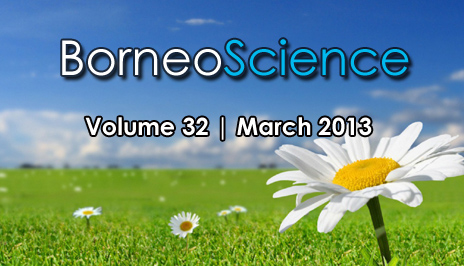ABSTRACT. There are several types of amplifier classes, and this includes the class E amplifier. The class E can achieve its efficiency up to 100%. This paper thus aims on getting the best model in estimating the power added efficiency of Class E power amplifier circuit using Silicon Carbide MESFET. Twelve models are obtained from three independent variables; DC current (Idc), drain voltage (Vdc), and power out (Pout). The original data set of 7 is generated to become 105 data samples (21 sets x 5 observations where each set with two missing observations) using the Jackknife sampling technique at the first stage (7C2). The power added efficiency model employs the Multiple Regression (MR) technique up to the second order of interactions. The best model is based on the eight selection criteria (8SC). The best model is found to be model M12.5.0, chosen from the six selected model).Efficiency factors affect the power added efficiency estimation are found to be X3(IDC) and X12(interaction between Pout and VDS).
KEYWORDS. Multiple Regression; Jackknife; interactions; Power Added Efficiency; Efficiency Factors.
Download Full Paper Here(Right-Click and Save As)
REFERENCES
Aminatul Hawa Yahaya, Noraini Abdullah, & Zainodin H. J. 2012. Multiple Regression Models up to First-order Interaction on Hydrochemistry Properties. Asian Journal of
Mathematics and Statistics, 5 (4): 121-131.
Bameri, H, Hakimi, A., & Movahhdi, M. 2011. A Linear-high Range Output Power Control Technique for Cascade Power Amplifier. Microelectronics Journal, 42: 1025-1031.
Franco, M., & Katz, A. J. 2005. Class E Silicon Carbide VHF Power Amplifier. IEEE MTT-S International Microwave Symposium Digest, The College of New Jersey, Ewing, NJ, 08628, USA.
Lucyszyn, S. 1997. Power-added Efficiency Errors with RF Power Amplifiers. International Journal of Electronics 82 (3): 303-312.
Lee, Y. S., & Jeong Y. H. 2007. A High-Efficiency Class-E Amplifier Using Sic MESFET. Microwave and Optical Technology Letters, 49 (6): 1447-1449.
Milosevic, D., Van Der Tang, J., & Van Roermun, A. 2002. Investigation on Technological Aspects of Class E RF Power Amplifier for UMTS Applications, in CiteSeerX.
Noraini Abdullah, Zainodin Haji Jubok, & Nigel Jonney J. B. 2008. Multiple Regression Models of the Volumetric Stem Biomass. WSEAS Transactions on Mathematics, 7 (7): 492-502.
Noraini Abdullah, Zainodin Haji Jubok, & Amran Ahmed. 2012. Sustainable Urban Forest Using Multiple Regression Models. Research Journal of Forestry, 6 (1):1-15.
Lind, D. A, Marchal, W. G., & Mason, R. D. 2005. Statistical Technique in Business and Economics, 11th Edn., McGraw-Hill Inc, New York, USA.
Quenouille, M. H. 1949. Problems in Plane Sampling. Annal of Mathematical Statistics, 20 (3): 355- 375. Power Added Efficiency Model for Mesfet Class E Power Amplifier using Jackknife Resampling 51
Stepan Lucyszyn, 1997. “Power-added Efficiency Errors with RF Power Amplifiers” . International Journal of Electronics, 82 (3): 303-312.
Soumya Shatakshi Panda & P.Manikandan. 2012. An Efficient And Power Optimized Cascode Stage RF Tuned Class-E Power Amplifier. International Journal of Engineering Research & Technology (IJERT), 10 (1): 1-6.
Tichelaar, B. W., & Ruff, L. J. 1989. How Good Are Our Best Models? Jackknifing, Bootstrapping, and Earthquake Depth. Eos, 70 (20): 593-606.
Zainodin, H. J, Noraini, A., & Yap, S. J. 2011. An Alternative Multicollinearity Approach in Solving Multiple Regression Problem. Trends in Applied Sciences Research, 6 (11): 1241-1255

